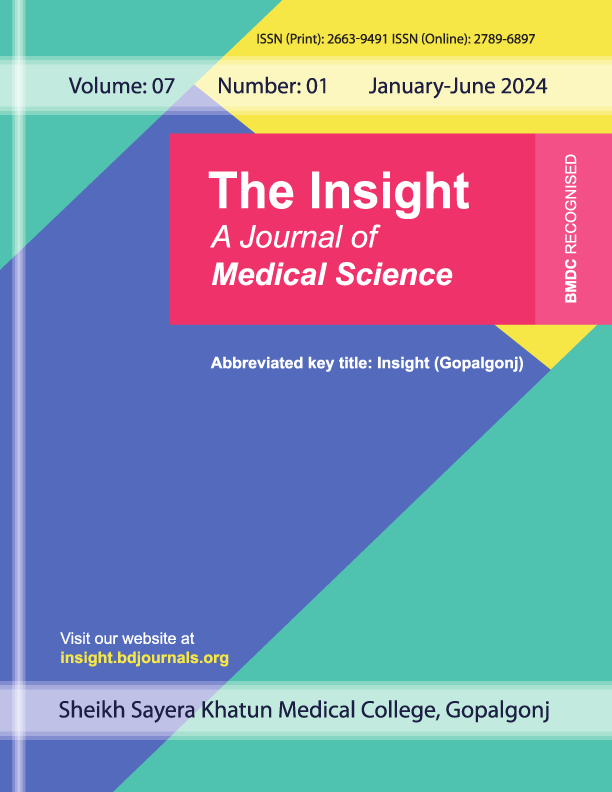Outcome of Paraumbilical Perforator Flap for Coverage of Soft Tissue Deficiency around the Forearm and Hand
Published 15-11-2024
Keywords
- Paraumbilical Perforator Flap (PUP),
- Soft Tissue Defect,
- Forearm Reconstruction,
- Hand Reconstruction,
- Donor Site Management
Copyright (c) 2024 The Insight

This work is licensed under a Creative Commons Attribution 4.0 International License.
How to Cite
Abstract
Introduction: Soft tissue injury of the forearm with exposed bone, tendon, or hardware is a challenging reconstructive problem. The coverage choice varies from primary closure to microvascular free tissue transfer. Objective: This study was designed to know the complications and the outcome of paraumbilical perforator flap following coverage of soft tissue deficiency around the forearm and hand. Methods & Materials: A prospective observational study was conducted at NITOR from January 2020 to December 2021. Study population was patient with soft tissue defect around hand, wrist or forearm requiring flap coverage meeting the selection criteria. Results: The mean age was 29.1±10.7 with male (90%) predominance. Machinery injury was the main cause of injury (66.7%). The mean wound dimension was 64.6±41.8 cm2 and flap dimension was 88±48.6 cm2. The mean duration of injury to reconstruction of defect was 22.5±7.1 days. In 7 (33.33%) cases, donor site could be primarily closed while in 14 (66.67%) cases, split thickness skin grafting was needed. The donor site complications were hypertrophic scar (9.5%, n=2), wound infection (4.8%), n=1) and loss of grafted skin (4.8%, n=1). Marginal necrosis, and partial necrosis occurred in 3 (14.3%) and 1 (4.8%) case respectively. In 17 (81%) cases there was complete flap survival. Conclusion: Paraumbilical perforator flap is a reliable option for coverage of soft tissue deficiency of the hand, forearm and wrist having unique attributes including easy planning and quick harvesting, consistent perforators and negligible donor site morbidity.


